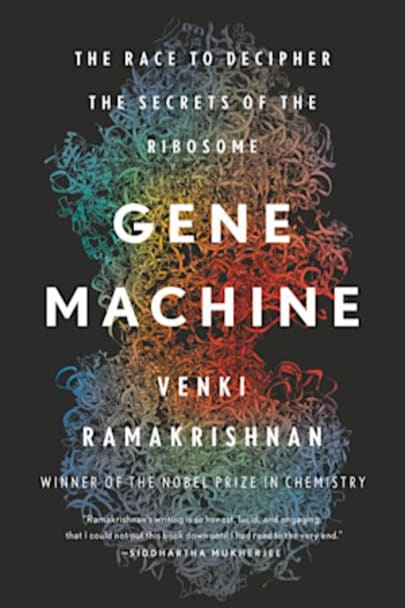A Nobel Prize-winning biologist tells the riveting story of his race to discover the inner workings of biology’s most important molecule “Ramakrishnan’s writing is so honest, lucid and engaging that I could not put this book down until I had read to the very end.” — Siddhartha Mukherjee, author of The Emperor of All Maladies and The Gene Everyone has heard of DNA. But by itself, DNA is just an … heard of DNA. But by itself, DNA is just an inert blueprint for life. It is the ribosome — an enormous molecular machine made up of a million atoms — that makes DNA come to life, turning our genetic code into proteins and therefore into us. Gene Machine is an insider account of the race for the structure of the ribosome, a fundamental discovery that both advances our knowledge of all life and could lead to the development of better antibiotics against life-threatening diseases. But this is also a human story of Ramakrishnan’s unlikely journey, from his first fumbling experiments in a biology lab to being the dark horse in a fierce competition with some of the world’s best scientists. In the end, Gene Machine is a frank insider’s account of the pursuit of high-stakes science.
more



If someone had told me that one of the most witty and enthralling books I’d read this year would be on the quest to understand ribosomes, I believe I would have laughed in his face, but I would have been quite wrong. Gene Machine is beyond superb.
An enchanting and invigorating work, Gene Machine casts a many-angled light on the world of science, the nature of discovery, and on one of the deepest mysteries of twentieth-century biology. Ramakrishnan, one of the key players in deciphering the molecular basis of protein translation, gives us both a rollicking scientific story and a profoundly human tale. In the tradition of The Double Helix, Gene Machine does not hesitate to highlight the process by which science advances: moving through fits and starts, often underscored by deep rivalries and contests, occasionally pitching towards error and misconception, but ultimately advancing towards profound and powerful truths. An outsider to the world of ribosome biology — an Indian immigrant, a physicist by training — Ramakrishnan retains his ‘outsider’s’ vision throughout the text, reminding us about the corrosive nature of scientific prizes, and the intensity of competition that drives researchers (both ideas, I suspect, will have a munificent effect on our current scientific culture). Ramakrishnan’s writing is so honest, lucid, and engaging that I could not put this book down until I had read to the very end.
The ribosome is the central processor that decodes the universal machine-code of life, and the history of its unravelling is on a par with that of DNA itself. You could think of Venki Ramakrishnan as a sort of ‘nice Jim Watson.’ His meticulously detailed and generous memoir has the same disarming frankness as The Double Helix. His personal honesty about the competitive ambition that drove him is tempered by his deeply thoughtful reflections on the potentially corrupting effect of big prizes. Gene Machine will be read and re-read as an important document in the history of science.
The ribosome, a structure of astonishing complexity, ‘lies at the crossroads of life’ and Venki Ramakrishnan played a key role in revealing its biological mysteries. His superb account lays out the science with great lucidity, but he also grants us the human face of science — the hard work and brilliant insights, of course, but also the role of luck, of personalities, jealousy, money, the roulette of major awards, and the further rewards heaped upon the fortunate. Science, in his glorious telling, becomes ‘a play, with good and bad characters.’ Competition and collaboration can appear inseparable, crucial figures get overlooked. It’s a wonderful book and a great corrective to the notion of science as dispassionate, untainted objectivity.
Discovering the structure of the ribosome was a truly incredible moment in the history of humankind: this intricate, microscopic machine that lies at the heart of all life, made mostly of RNA, that mysterious material that pre-dates both DNA and protein. As its shape and moving parts came gradually into focus through ingenious applications of crystallography, it is extraordinary to think that this is a device vital to all life, yet which no living thing has seen or understood till now. In this detective story of a book, told with smiles and subtlety, Venki Ramakrishnan relates how he, an immigrant from India, managed to assemble the people, the ideas and the tools to achieve this remarkable feat, in collaboration and (sometimes sharp) competition with other scientific teams, culminating in a Nobel Prize. For students of how science actually happens, this is a book to be treasured and pored over.